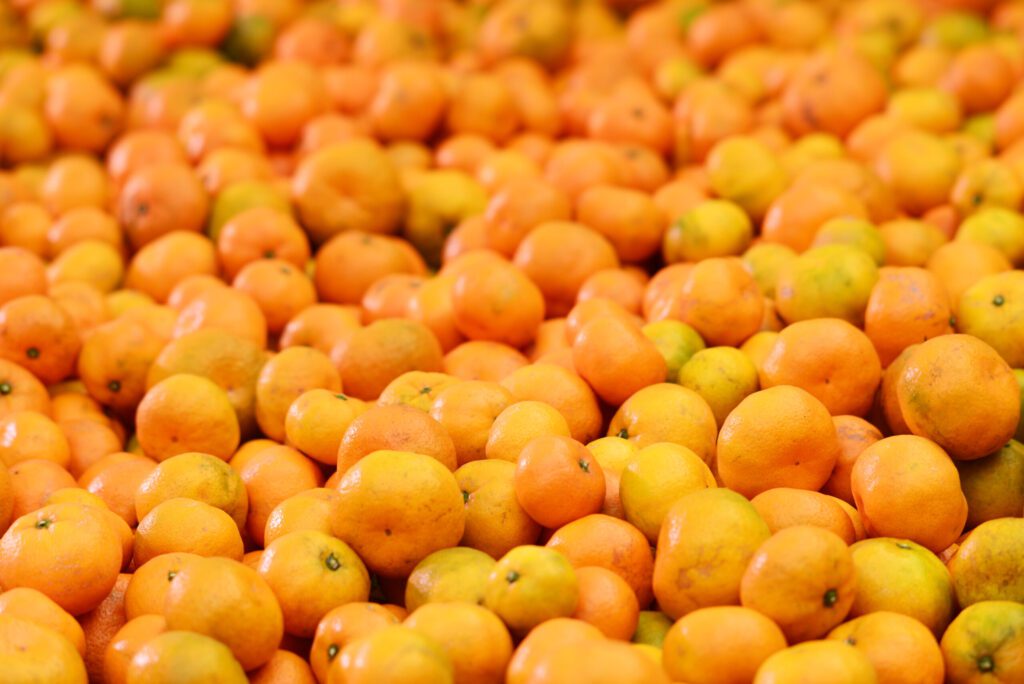Growers Cautiously Eye Weather, Drop Rate Heading Into New Season
by TIM CRAIG
As the Florida citrus industry waits for the official 2021-2022 USDA Citrus Forecast Report to drop in mid-October, some of the growers think “the drop” may be one of the keys to the whole season.
The 2020-2021 season finished with 52.8 million boxes, a somewhat lower-than-expected result that was hindered by a significant late-season drop that led to a record drop rate: 43 percent for early- and mid-season oranges, 41 percent for Valencias — the highest recorded drop rates in a non-hurricane year.
“We had a historically high drop rate last year that had an impact on last year’s crop,” says Larry Black from the Peace River Packing Company. “This year, if the weather is good through the fall and into spring, we should see a much-lower drop rate this season.”
But the drop rate isn’t the only thing that will impact this year’s crop, says Black: There are fewer trees in production this year.
“There are 3 percent fewer trees in production heading into the 2021-2022 growing season, so my initial expectation is that there will be fewer boxes,” he says. “However, the growing conditions have been ideal so far. We’ve had good weather and a compact bloom, so I’m hopeful the final yield will overcome that loss of trees.”
While the official forecast is set for Oct. 12, private consultant Elizabeth Steger released her forecast on August 16, predicting 52 million boxes, which is slightly less than last year’s final numbers. Her forecast includes lower numbers of early- and mid-season oranges from last year (20.8 million, compared with 22.7 million last year), but higher numbers of Valencias (31.2 million, compared with 30.1 million last year).
Florida Citrus Mutual CEO Mike Sparks says that Steger’s estimate of 52 million is generally in line with what he has heard from the growers he has visited. But, he says, it all could depend on the drop rate.
“Last year, we looked like we might have been on the recovery, but when that fruit dropped, it ate up all of the growers’ profits,” he says. “So the big question on everyone’s mind heading into this year is: ‘What will be the drop?’”
Sparks remains optimistic about the 2021-2022 season. He’s seen a more even bloom and the rainfall has been fairly good. He notes that while there may be less fruit, there could be larger pieces, which could balance things out.
“I think we’re looking at a similar prediction to the previous year, around 55-57 boxes, but an estimate of 60 million will not surprise me,” he says. “We’re entering this next season with a lot of optimism, mixed with just a little bit of pessimism. But you’ve got to live with the glass half full.”
For Ray Royce, the president of the Highlands County Citrus Growers Association, Steger’s prediction is a little low, but he remains cautiously optimistic for the growers in his association.
“The growers in Highlands County account for around 16 percent of the total for the state, and I am hopeful that we will be able to exceed our predicted levels,” he says. “The final crop will be determined, in part, by how big the drop is and if the amount of drop the USDA puts in their modeling will have an effect as well, so it’ll be interesting when the forecast gets released.”
Steger’s forecast did take into account a lower drop rate, but it noted that it was something to keep in mind as the season progresses. “We do not know if last year’s lower drop was related to climatic conditions, greening, soil treatments or tree health,” she wrote.
Heading into the season, though, Royce says the weather has been cooperating.
“Obviously going into the main season we’ve seen some pretty good rain, and now we just need to get through the next five to six weeks without any tropical weather storms,” he says. “Then the next thing is to get through from mid-December to mid-February without any significant cold weather.”
For Vic Story of the Story Companies, the forecast is one prediction, but the main determinant for growers is a bit simpler: “Those growers that take good care of their groves are going to see a good crop,” he says. “Those that don’t will see a light crop.”
These days, he’s seeing more groves going out and more groves that are unkempt, so he won’t be surprised if the forecast is in the high 40s.
“I’ve been in the groves a lot recently, and the size is not impressive,” he says. “Even in the groves that look to have a good crop, the size isn’t there yet, and the trees seem to have a thinner inside leaf coverage.”
Story notes that while the drop rate really affected last year’s crop, the weather played a significant role. Last year was the coldest winter since greening, he said, and it was also the driest since greening.
“Last year, there were groves that we had west of US 27 in the Fort Meade area that didn’t see a drop of rain for more than five weeks,” he says.
So different climate conditions, as well as a lower drop rate, could bring the final count for 2021-2022 back up into the 50- to 52-million box range, he says.
“I’m saying the high 40s, but I really do hope it’s more,” he says. “And I certainly hope I get my share of more.”

